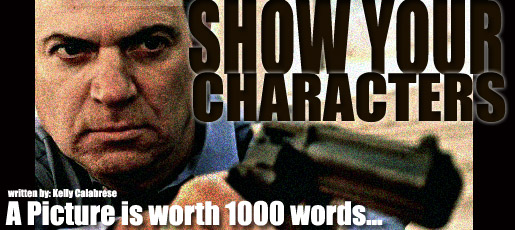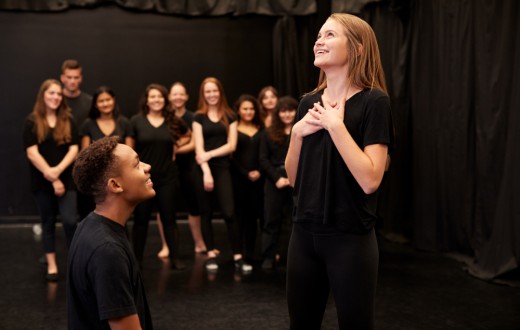Probably for as long as acting has existed, there has been a common trope regarding how dumb actors are. The dizzy blond, the vacuous pretty boy–there are jokes about these stereotypes dating back to Shakespeare’s time and likely beyond.
And while it’s probably true that we all have one actor friend who is blessed with talent and good looks but um…a room temperature IQ, so to speak, there are also plenty of examples out there demonstrating that some of our best actors are also the brightest.
So the next time your non-actor friends make some oh-so-subtle remark about the dimwittedness of actors, you can sweetly point out that Ken Jeong is a medical doctor, or that Rashida Jones went to Harvard.
You can also point them to your bookshelf, where you should definitely have at least these five titles, well-worn, with plenty of highlighted passages, and free of dust!
1. Audition – Michael Shurtleff
This book is the granddaddy of audition advice books, and a must-have for either the beginning actor or veteran. Shurtleff was the casting director for original Broadway productions like Beckett and Chicago, as well as for films like The Graduate and Jesus Christ Superstar, so he has a pretty good idea of what casting directors look for at auditions. The book, distilled from his years as a top casting director in the 1960s and 1970s may be somewhat dated in terms of its language and references–it was first published in 1978, after all–however as a hands-on, how-to guide to auditioning it is unbeatable. If for no other reason, read it for Shurtleff’s “12 Guideposts” to a successful audition, a set of principles that no actor should audition without.
2. An Actor Prepares – Constantin Stanislavsky
While heavy, older tomes penned by authors with multi-syllabic Russian names are not generally known as sources of humor, Stanislavsky’s book is written in a manner that is actually quite funny and often fun to read. This is doubly surprising considering that he is the father of what is now called “method acting,” an approach Stanislavsky developed himself that is often associated with a grim, deadly seriousness. It incorporates the actors’ actual experiences and converts them into playable actions, and these days is rather controversial for the demands it places on the actors’ very real and personal psyche. While method acting has largely fallen out of favor, An Actor Prepares nonetheless remains a valuable resource for helping the actor to access his or her imagination and creativity, and includes tons of advice for helping actors to fully incorporate themselves into their characters.
3. Meisner on Acting – Sanford Meisner
Sanford Meisner came out of the famous Group Theater that was formed in New York in the 1930s, which brought Stanislavsky’s method to American shores. Along with other luminaries like Stella Adler and Lee Strasberg, Meisner was a major influence on not only the theater of that era, but of all subsequent theater and film training, study and performance for decades to come. His influence is still felt today–and with good reason. Meisner took the Stanislavsky Method and pivoted off of it, abandoning the controversial and troubling “affective memory”-based techniques and focusing more on what he called “the reality of doing.” A giant of the theater, theatrical training, and acting theory, no actor today should be unfamiliar with Meisner’s teachings.
4. Respect for Acting – Uta Hagen
Speaking of actors who are anything but dumb, Uta Hagen’s bona fides are undeniable: not only did she author several books on acting, including her seminal Respect for Acting, she originated the role of Martha in Edward Albee’s Who’s Afraid of Virginia Woolf, and before that played Blanche DuBois opposite four different Stanley Kowalskis on Broadway and in touring productions, including Marlon Brando and Anthony Quinn. She went on to win a Lifetime achievement Tony Award, and taught actors like Matthew Broderick, Al Pacino, Jack Lemmon and Sigourney Weaver among many others. Lucky for us, she shared her knowledge in books like Respect for Acting, which is an energizing instruction book that has the actor strip away the masks we hide behind and delve into basic, truthful questions about our characters: Who am I? What do I want? What is my relationship with the other characters? Hagen’s no-nonsense yet supportive approach makes this book one that actors will find themselves referring to again and again.
5. A Practical Handbook for the Actor – Melissa Bruder, Lee Michael Cohn, et al
This slim volume only measures a seemingly lightweight 94 pages, especially compared with the voluminous tomes listed above. But much like the title says, it truly is a practical resource for actors. It contains a structured and clear-cut set of steps developed out of the authors’ work with David Mamet and William Macy, and more than perhaps any other book out there goes a long way to demystifying the actor’s process. By laying out a series of nuts-and-bolts steps and procedures for steering the actor away from the murky waters of what they as the character may or may not feel on a given night–which is of course highly changeable and unpredictable–and instead towards choosing solid actions to perform. Of course, any actor with any amount of experience is familiar with the old saw “acting is action.” This isn’t news. However the Practical Handbook breaks down how to really sink your teeth into figuring out an appropriate action–giving you a checklist of nine requirements for a good action–and explores ways to be creative in choosing one. Each chapter builds on the last, with clear and straightforward help on things like text analysis, avoiding what they call “The Emotional Trap,” and finally how to create playable actions. They offer examples which will give you the tools to work with virtually any character in any scene, and there is even a troubleshooting section in case you run into a brick wall. A must-have for any actor’s toolkit.
6. bonus book: Actions: The Actor’s Thesaurus – Marina Calderone
An excellent companion piece to the Practical Handbook, this easy-to-use volume contains thousands of action words listed in alphabetical order and by category to help you get out of the same old rut when it comes to selecting your actions. Really helps to bring the general notion of playing actions down to highly-refined specifics. Which will in turn help you take your acting to the next level!







